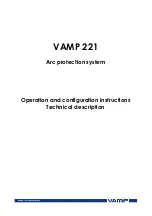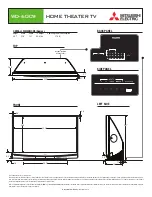
BE1-951
Application
8-25
Normal Operation - Alarms
If the continuous self-test diagnostics of the relay detect an error, failsafe output contact OUTA will close and
the Relay Trouble LED of the HMI will light. OUTA will also close if relay operating power is lost. More
information about alarms is provided in Section 6,
Reporting and Alarm Functions.
Contingency Operation - Test Mode
Test mode is intended to increase the security of the feeder protection and control system if external test
switches aren’t installed on all outputs. When the relay is out of service for testing, the breaker failure,
automatic reclosing, and block upstream instantaneous functions are disabled. Backup by the upstream
relay is enabled. See the
Bus and Backup Logic Schemes subsection for more details.
De-energizing IN4 or closing virtual switch 343 places the logic scheme in test mode. IN4 can be controlled
by a panel mounted selector switch that is closed in the normal state and open in the test state. IN4 can also
be controlled by a pole of a standard external test switch that is opened with the rest of the test switch poles.
The logic for test mode drives virtual output 15 (VO15) which is alarm bit 23 in the programmable alarm
mask. If desired, it can be masked to drive an alarm LED to provide indication when the relay is in test mode.
Contingency Operation - Backup Protection for Feeder Breaker Failure
OUT5 is configured as the breaker failure trip output and can be wired to trip the bus breaker or a lockout
relay. The breaker failure pickup (BFPU) output trips the feeder breaker directly via OUT1 to provide a
breaker re-trip signal for additional security.
Initiation of the BF function block by external relays is not accommodated in this scheme. The breaker failure
function block is initiated by a protective trip (VO11). This function block has an independent fast dropout
phase current detector that detects a breaker opening and stops timing. An open breaker is detected when
the current decreases below 10 percent of the nominal CT input (1 A or 5 A).
A time delay setting of zero will disable the breaker failure function block. This permits the traditional radial
system backup scheme of coordinated relays tripping different breakers.
The FDR-W-IL logic scheme will prevent OUT4 (Block Upstream Instantaneous Trip) from energizing when
a breaker failure trip (BFT) occurs. This allows the BUS relay to trip the bus breaker through its own 50T
elements if a direct trip from the feeder relay is not desired. Then, fault clearing time on the circuit with the
failed breaker will be determined by the feeder relay breaker failure time (or bus relay 50T time, whichever
is greater) instead of the bus relay 51 time. Note that this approach is limited by the sensitivity constraints
of the bus relay.
Contingency Operation - Backup Protection for Feeder Relay Out-of-Service
When the feeder relay is out of service, OUT3 opens to signal the upstream relays providing backup
protection. OUT3 operates in a failsafe mode; the output is closed during normal operation and open when
the feeder relay is out of service. This feature provides backup mode signaling when the feeder relay is
extracted from the case.
Backup for relay failure can be implemented using the BUS and BACKUP preprogrammed logic schemes.
These schemes are described in detail in the
Bus and Backup Logic Schemes subsection.











































